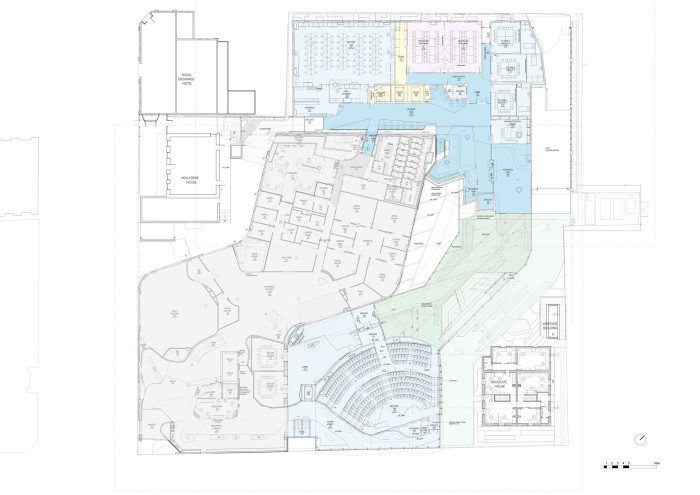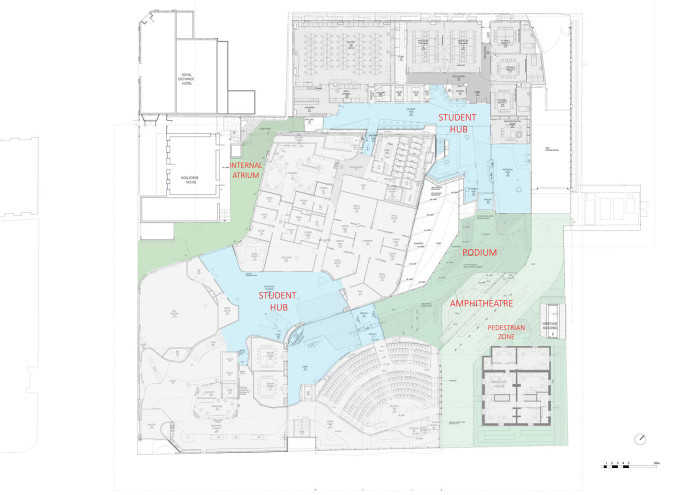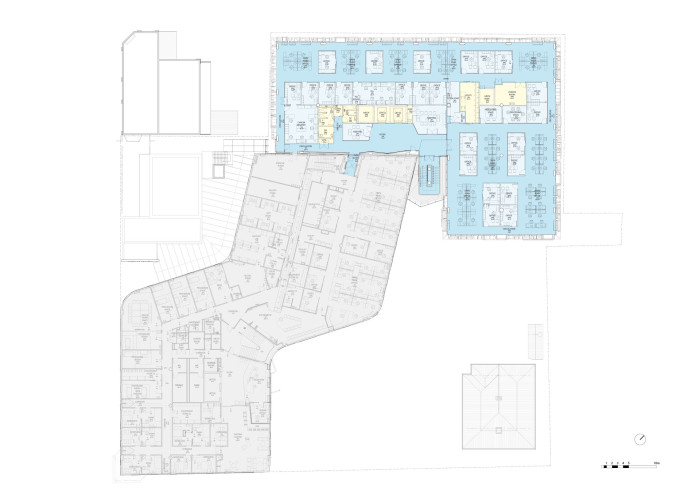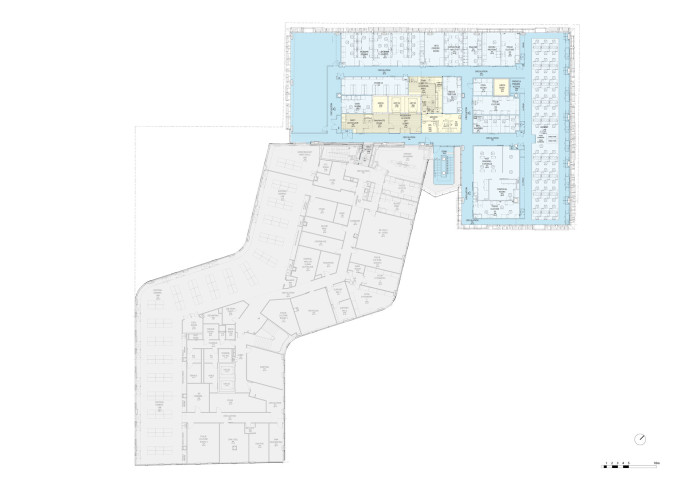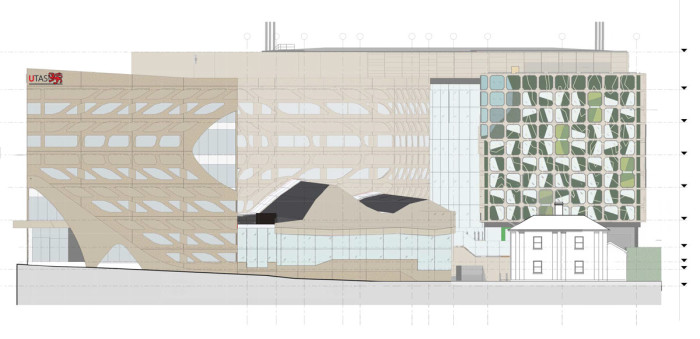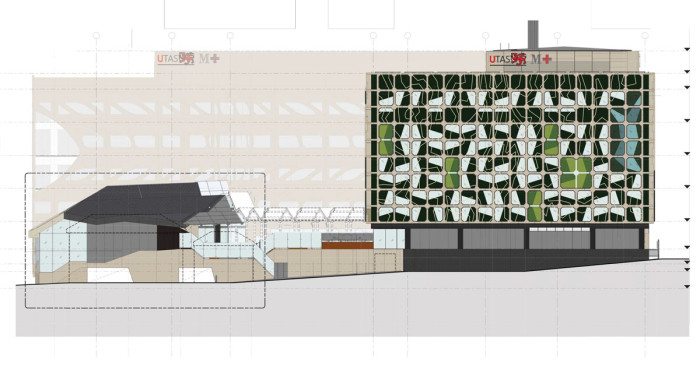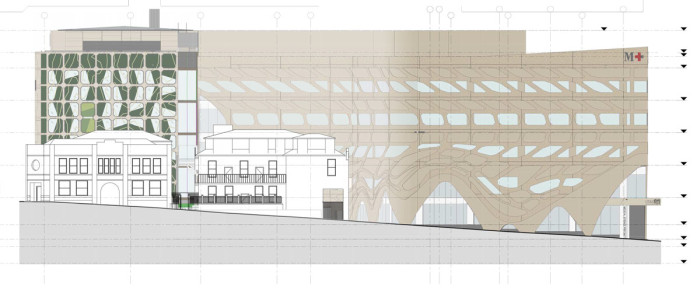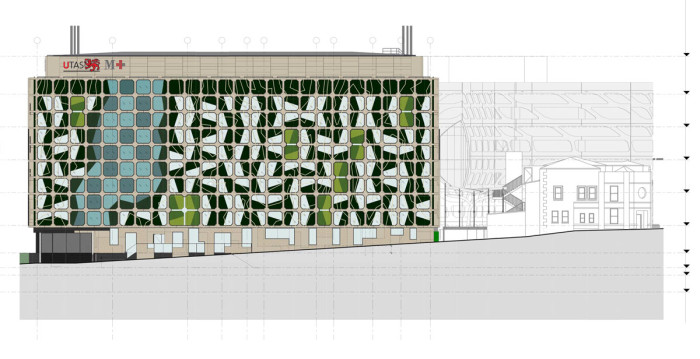- Share
- Like
- Tweet
- Digg
- Tumblr
- VKontakte
- Love This
- Odnoklassniki
- Meneame
- Blogger
- Amazon
- Yahoo Mail
- Gmail
- AOL
- Newsvine
- HackerNews
- Evernote
- MySpace
- Mail.ru
- Viadeo
- Line
- Comments
- SMS
- Viber
- Telegram
- Subscribe
- Skype
- Facebook Messenger
- Kakao
- LiveJournal
- Yammer
- Edgar
- Fintel
- Instapaper
- Copy Link
Lyons Architecture has designed the Medical Science 2 of University of Tasmania, a state-of-the-art research and education building. Located in Hobart, Tasmania, the spectacular facade of the building was inspired by the city’s topography. The design of the building makes use of natural light by controlling glare and heat in this 5 Star Green Star facility.
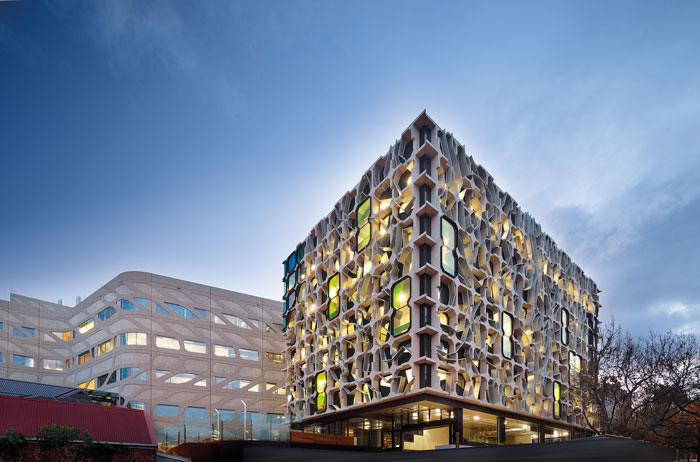
Image © John Gollings
Project Description from Lyons Architecture:
Medical Science 2 is a major research and education building in the University of Tasmania’s Medical Science Precinct located diagonally opposite the Royal Hobart Hospital in the city of Hobart. It forms the second stage of the now complete precinct and joins together with Medical Science 1 to form a fully integrated urban satellite campus of the University.
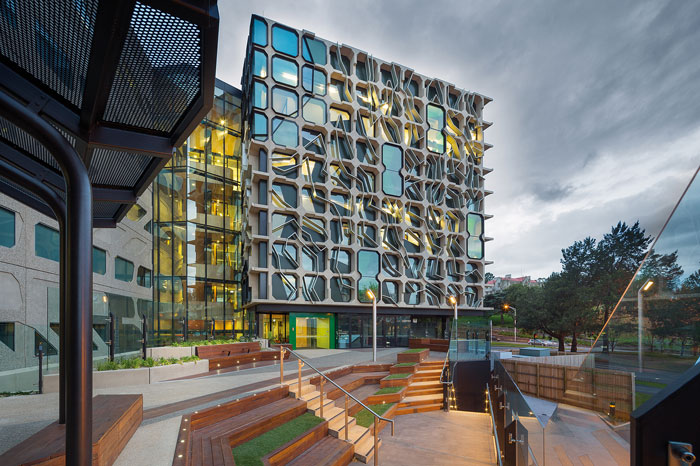
Image © John Gollings
At the core of the MS2 building design is the creation of a ‘new teaching/ learning and research culture’ that is reinforced in the building’s image and its social and functional planning. The building provides a range of new generation teaching spaces on the lower levels of the campus including a new 250 seat arc shaped lecture theatre, a technology enabled Integrated Learning laboratory, multimodal flexible teaching spaces, Clinical Training Practice Rooms and technology enabled Integrated Learning (wet) Laboratories.

Image © John Gollings
The upper levels of the building comprise teaching staff accommodation and dry clinical research areas, with the upper most level of the building being dedicated entirely too large open plan PC2 laboratories with specialist support spaces such as DNA Sequencing, Flow Cytometry, Tissue Culture and Histology rooms.
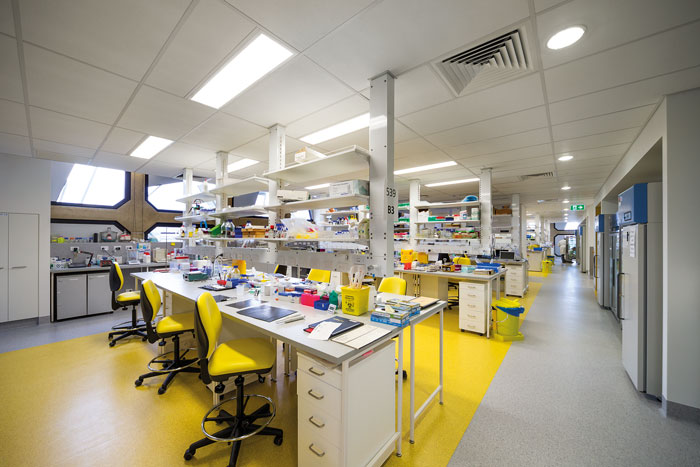
Image © John Gollings
One of the primary challenges in the design of the project was to create a fully integrated and connected campus environment. As the first stage of the precinct MS1, had not been contemplated for future extension, the creation of appropriate connectivity and access was critical to the success of the project.
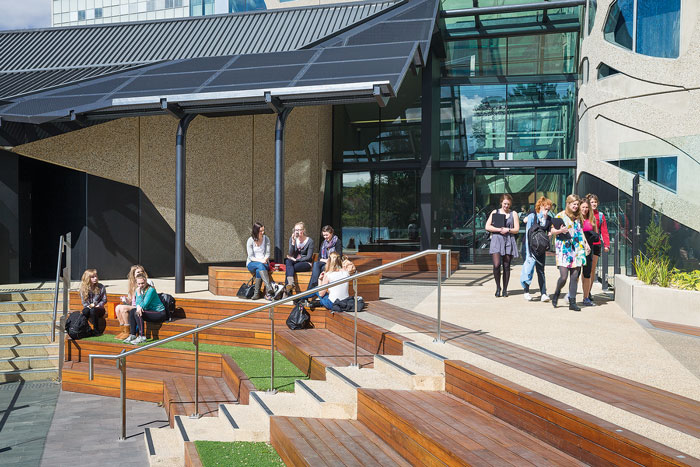
Image © John Gollings
The solution was a contiguous student hub forming a circulation loop. Developed as the centre piece of the campus it connects a series of in-door and outdoor spaces including the new and existing lecture theatres, the existing glazed atrium, a new landscaped terrace and a series of informal student focussed spaces.
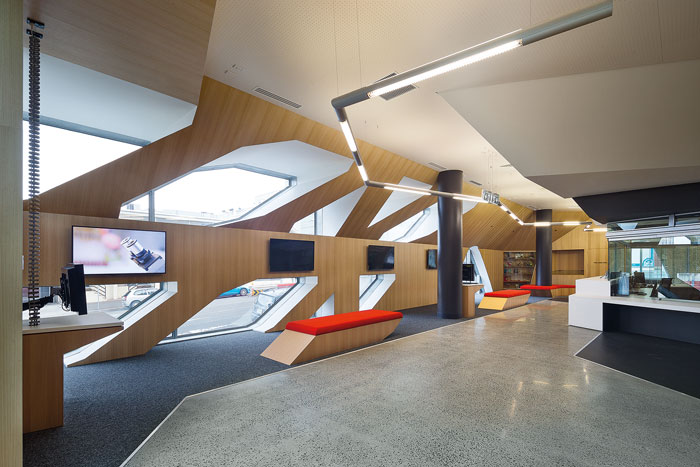
Image © John Gollings
The façade has been designed to provide high levels of internal amenity to the occupants of the building as well as provide a distinctive presence for University within the urban setting of the Brooker Highway and the ‘railway roundabout’. From the exterior, the building is characterised by a brise soleil system comprised of a concrete precast lattice grid, overlaid with aluminium sun-shading in a topographical contour pattern that references the surrounding landscape.
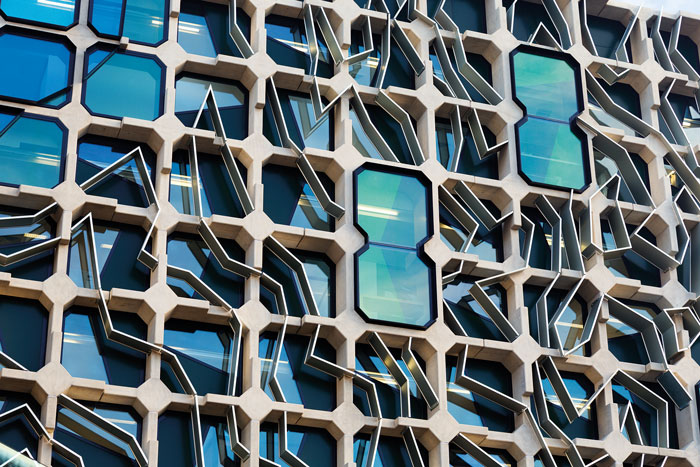
Image © John Gollings
This system passively controls thermal heat gain and glare providing abundant natural light to the interior spaces of the building. The façade also facilitates the social and collaborative dynamic within the workspaces by offering occupiable bay windows with built in seating overlooking the Queens Domain parkland and the Derwent River. Workstations and offices do not engage the façade, defining a ‘democratic’ accessible edge for staff.
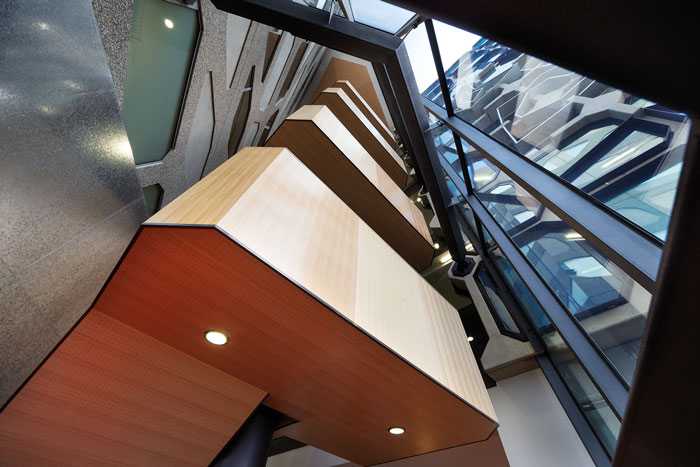
Image © John Gollings
MS2 has been designed to achieve 5 Star Green Star, with a range of initiatives such as unique passive solar control system, thermally broken insulated facade, energy efficient HVAC system, power minimisation.
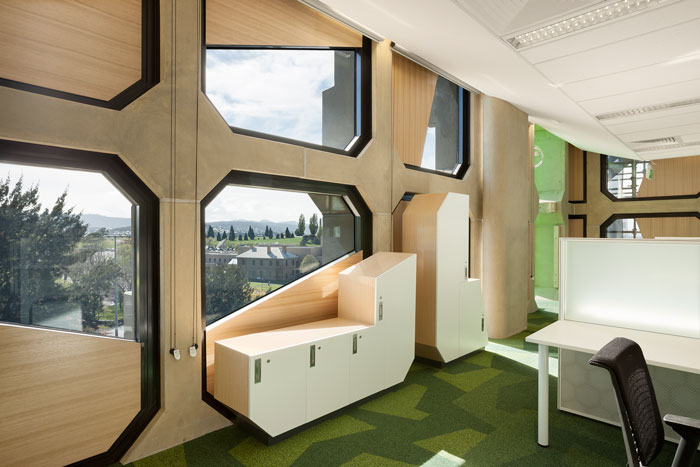
Image © John Gollings
Management
The University of Tasmania Medical Science 2 project was certified as the first 5 Star Green Star Education project in Tasmania. The building achieves this through a thermally modelled façade system and building fabric. In combination with this the building incorporates efficient central energy plant combined with various energy saving technologies throughout the building.
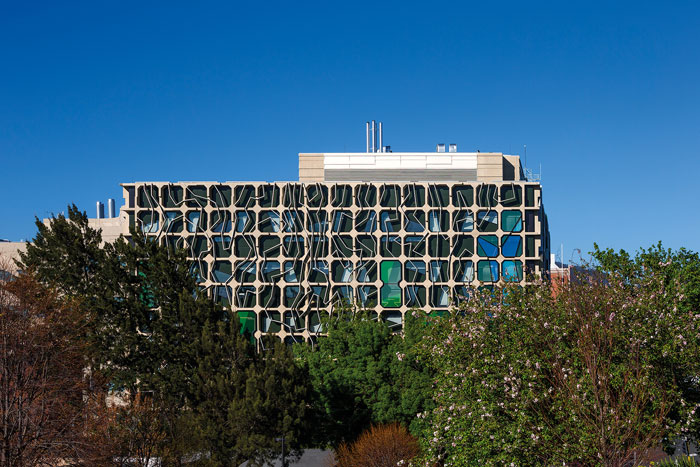
Image © John Gollings
The building’s main façade employs a whole of surface approach to thermal load through a brise soleil system comprising a deep thermally broken precast lattice interlaced with contour patterned aluminium sun shading. 50% of the open area in the brise soleil is solid highly insulated spandrel panel and 50% is glazed vision panel of high performance double glazing. Areas unprotected by these sunshades are treated with a body tint and applied block out film to reduce the suns direct heat load by 50%.
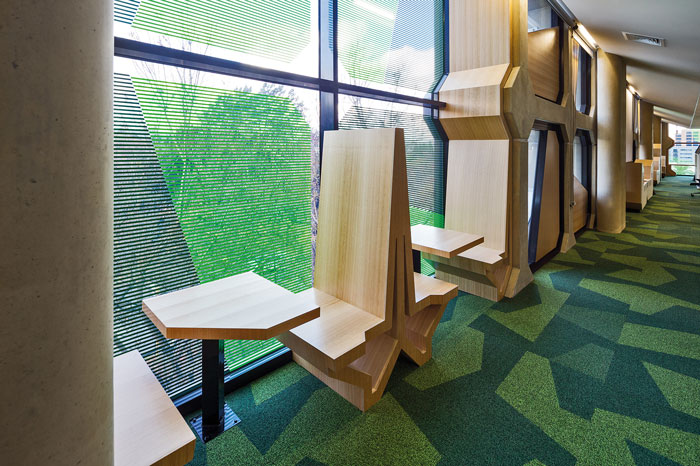
Image © John Gollings
Throughout the project all glazing elements are treated with similar high performance glass and thermally broken frames. This system provides for enhanced daylight and amenity to office and research spaces within the building whilst greatly reducing the thermal heat load. This in turn creates lower energy usage for the building in terms heating, cooling and lighting requirements.
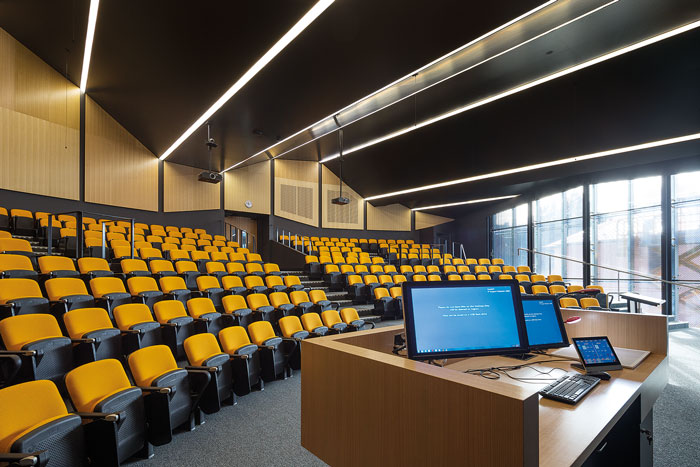
Image © John Gollings
Some of other ESD initiatives employed in the building include a central Atrium Thermal Chimney, 80,000l rain water tank for toilets and irrigation, showering, locker and secure bike parking facilities for both MS1 and MS2 (200 spaces), Solar Boosted Hot Water, Water reducing fittings and fixings, ambient light reactive lighting, recycled carpets, sustainable furniture and fitting selections, locally produced glazing and precast, outgoing water treatment and an increase in the amount of accessible green spaces for occupants across the site.
Photography: John Gollings
*All images and information courtesy of World Architecture Festival.

